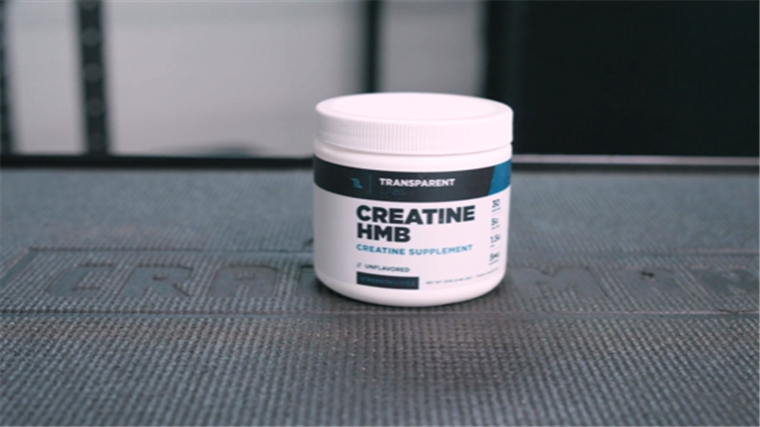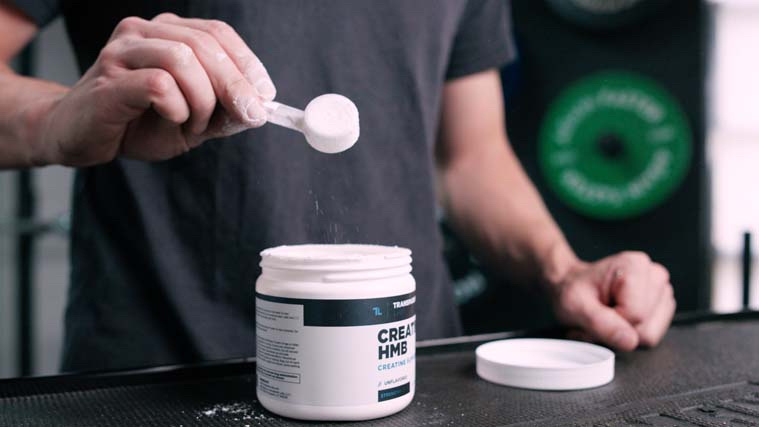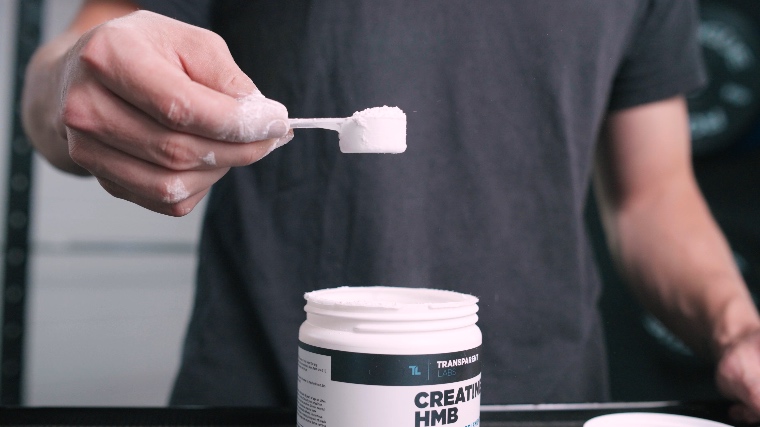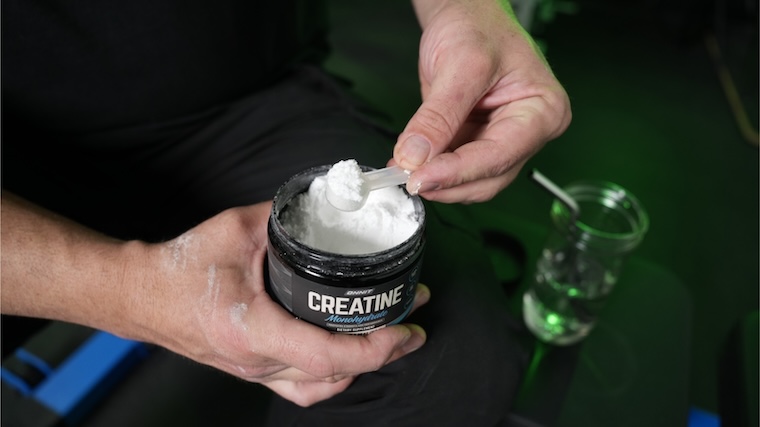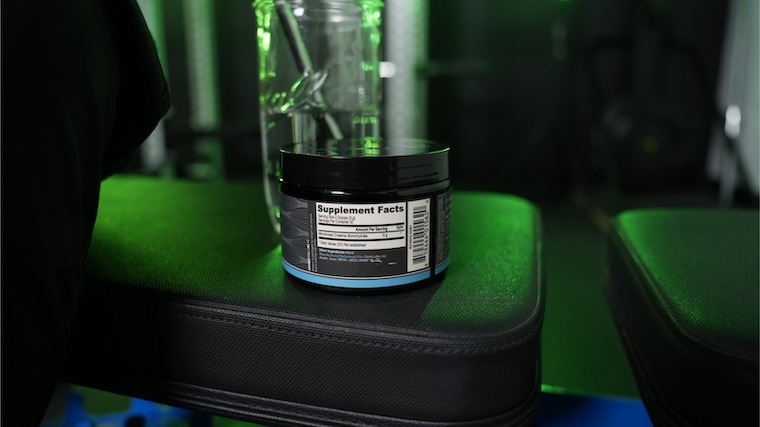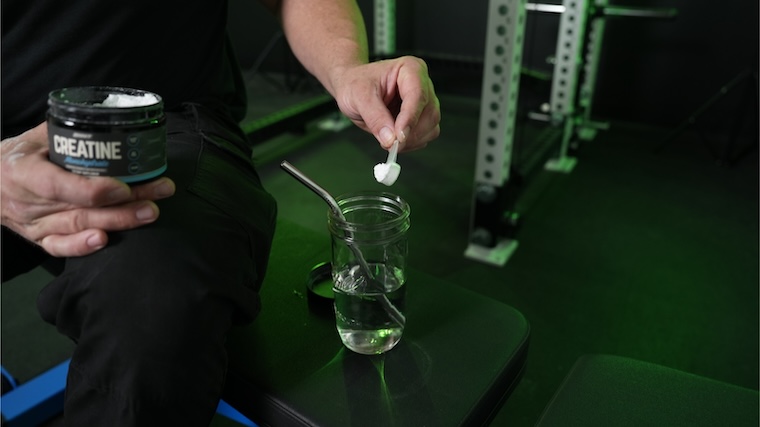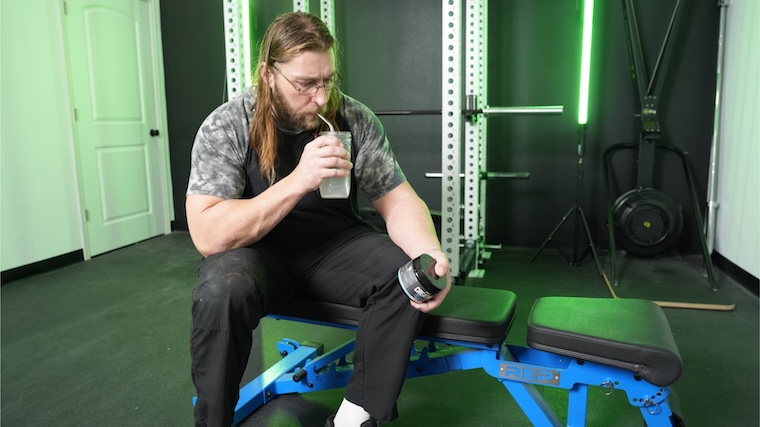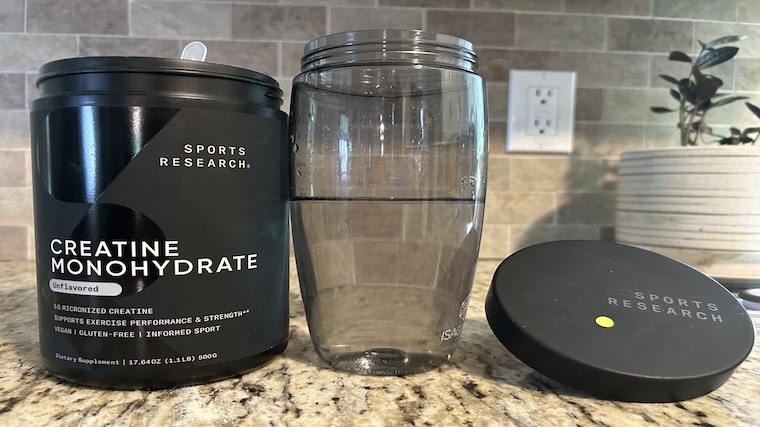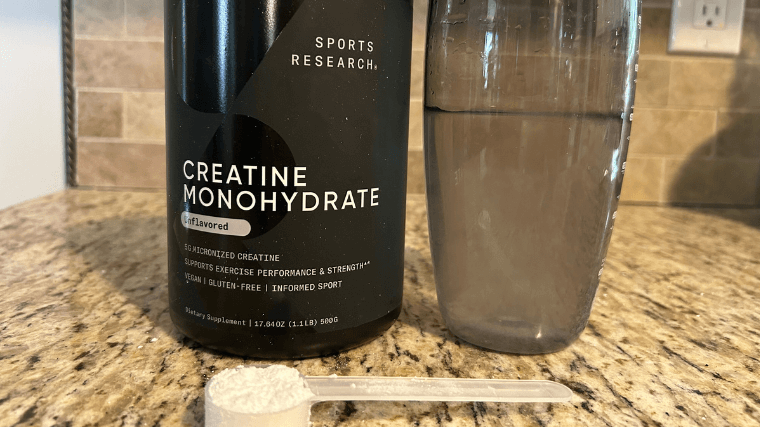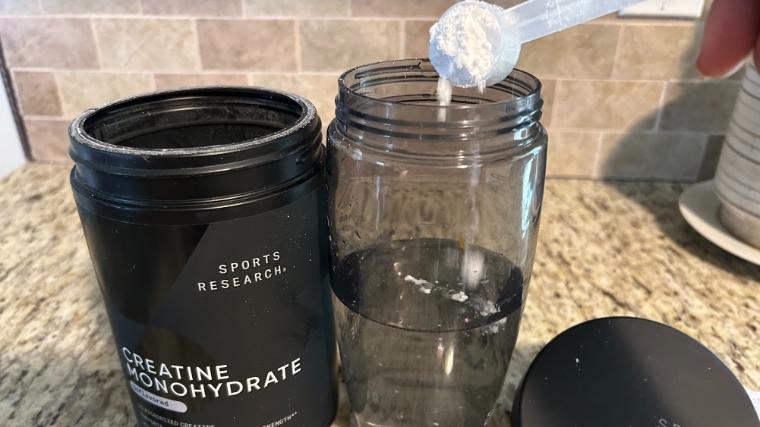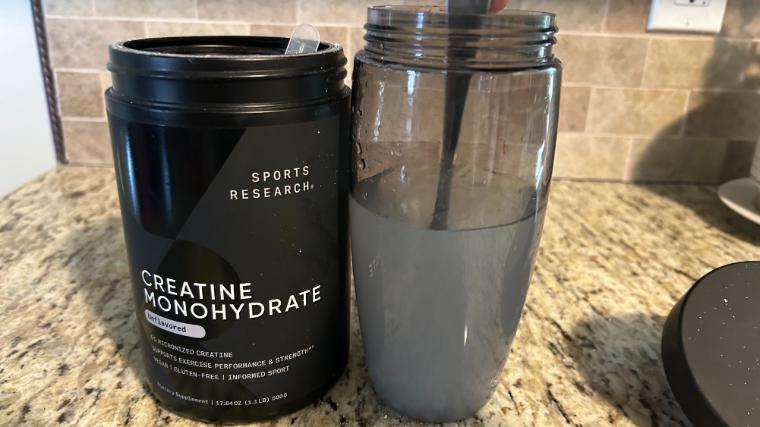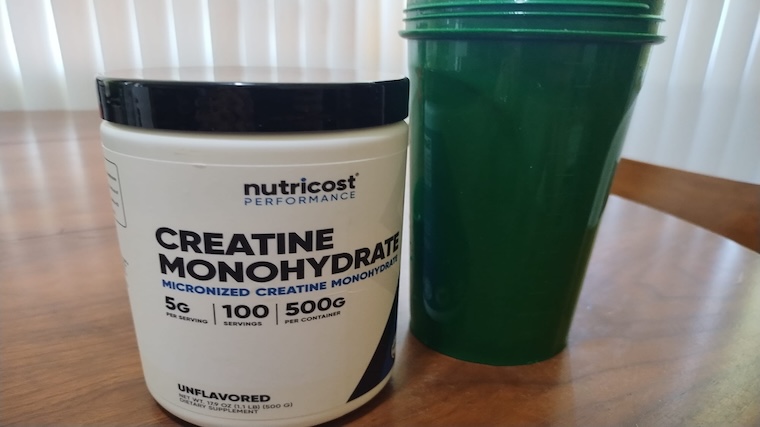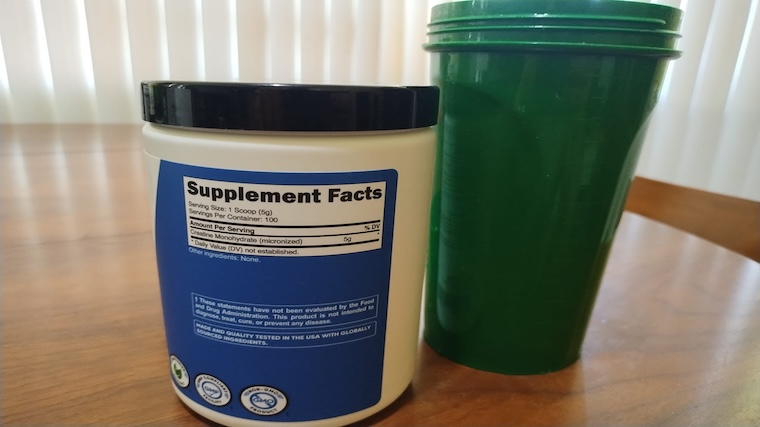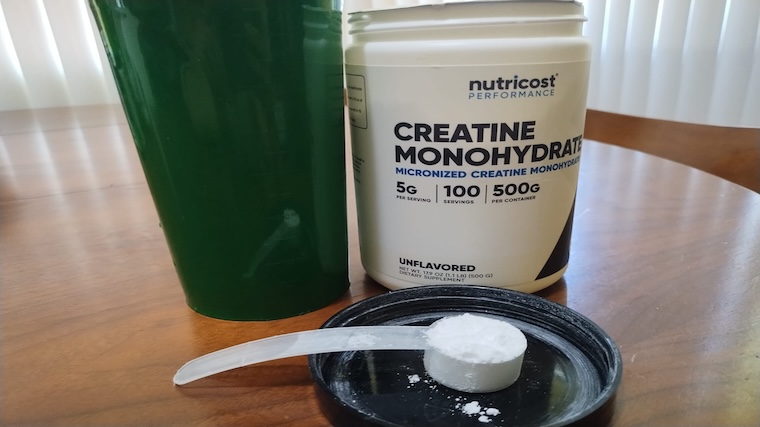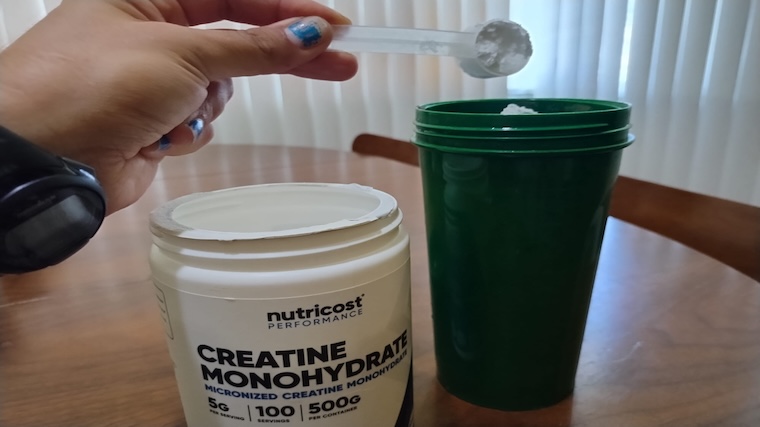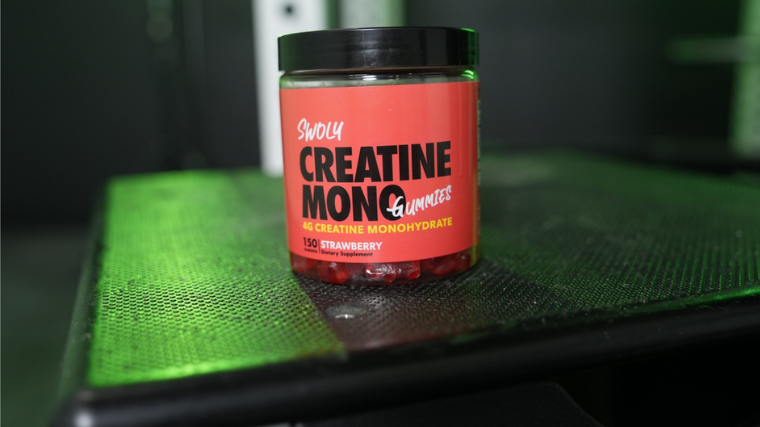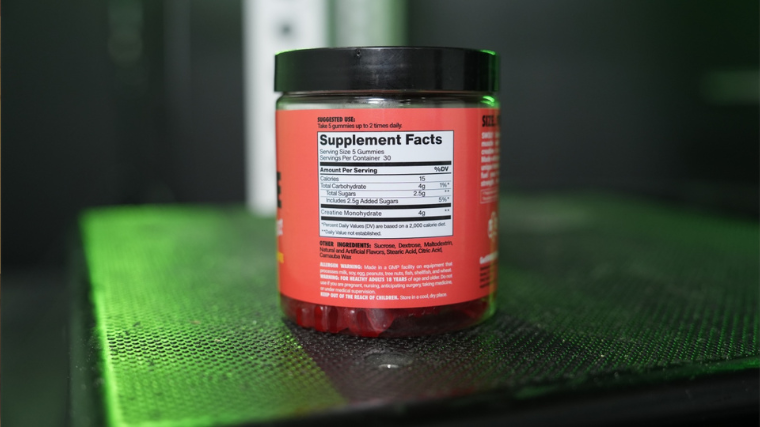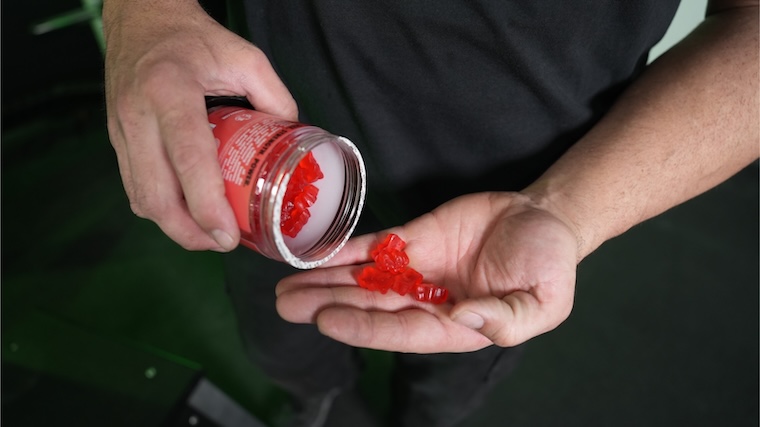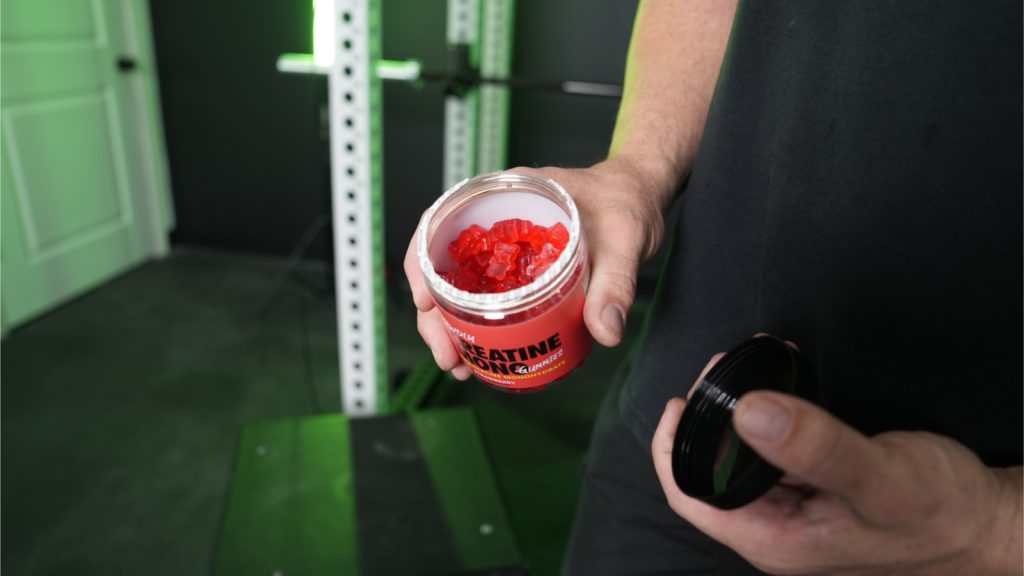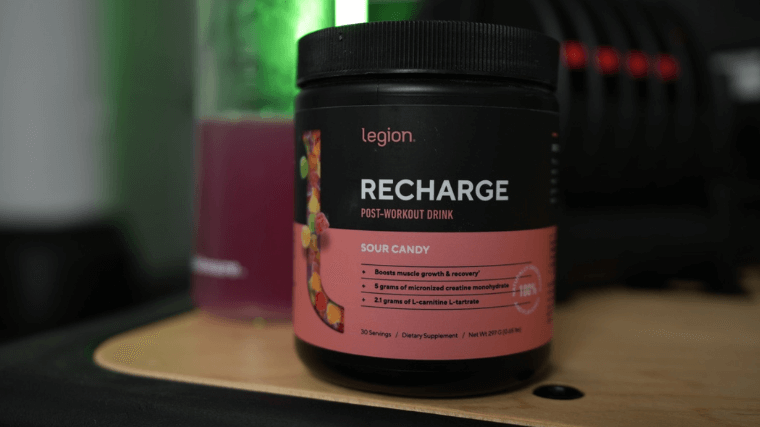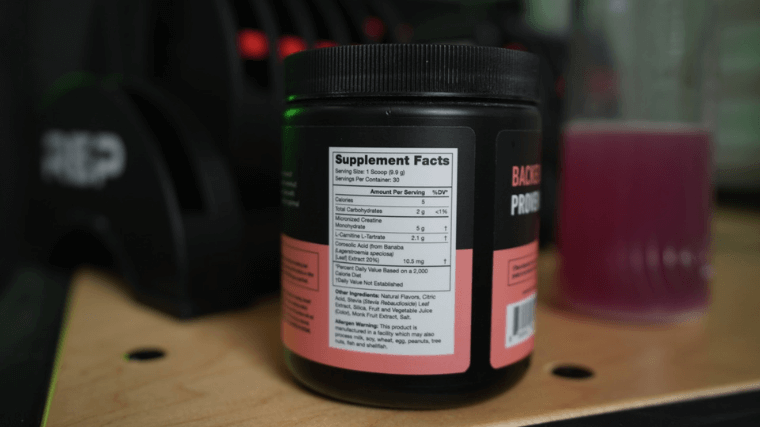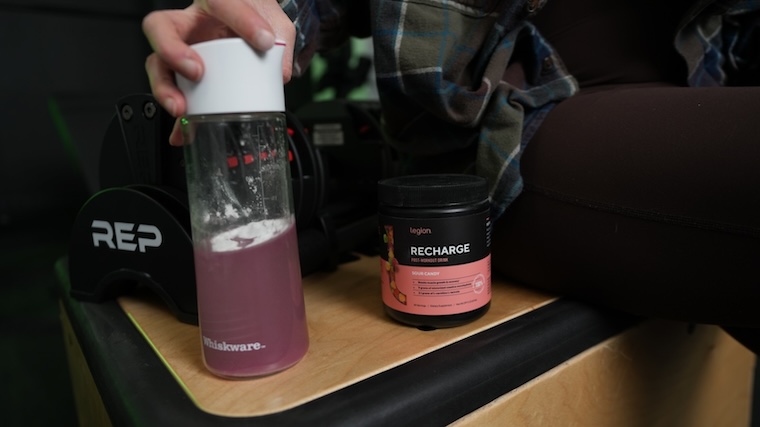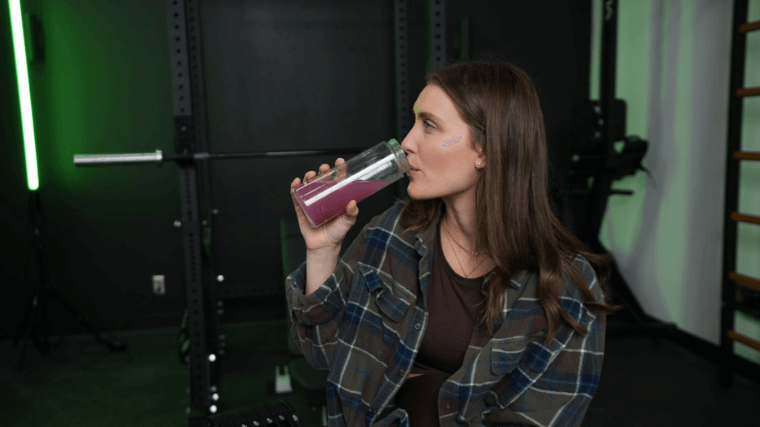Creatine is a natural compound produced by the body from amino acids, covering about half of our daily needs, with the rest required from creatine-rich foods — like red meat and fish — or dietary supplements. (1) While even some of the best creatine supplements caution against use by individuals under 18, the International Society of Sports Nutrition (ISSN) clarifies that this is due to legal concerns, not safety. They also recommend creatine monohydrate for adolescents in serious, supervised training, provided they follow a balanced diet and appropriate dosages. (2)
If you’re a teen, parent, or coach looking for trustworthy advice on creatine supplementation, you’re in the right place. As a dietitian, I’ve collaborated with BarBend’s expert reviewers and testers to curate the best creatine for teens. This comprehensive guide ensures you have access to the safest and most effective choices, highlighting the safety and use of creatine so you can make informed decisions.
The 7 Best Creatine for Teens of 2025
- Best Creatine for Teens Overall: Transparent Labs Creatine HMB
- Best Creatine for Teens for Beginners: XWERKS Lift
- Best Creatine Monohydrate for Teens: Onnit Creatine Monohydrate
- Best Creatine for Teen Athletes: Sports Research Creatine
- Best Budget Creatine for Teens: Nutricost Creatine
- Best Creatine Gummies for Teens: Swoly Creatine Gummies
- Best Tasting Creatine for Teens: Legion Recharge
Editor’s note: The content on BarBend is meant to be informative in nature, but it should not be taken as medical advice. The opinions and articles on this site are not intended for use as diagnosis, prevention, and/or treatment of health problems. It’s always a good idea to talk to your doctor before beginning a new fitness, nutritional, and/or supplement routine. Individual needs for vitamins and minerals will vary.
How We Tested and Chose the Best Creatine for Teens
The BarBend team is made up of competitive athletes, certified personal trainers, and lifelong fitness enthusiasts. To determine the best creatine for teens, we’ve tested 48 different supplements from some of the industry’s most trusted brands using a multi-point methodology to rate each profile on a scale of 1 (lowest) to 5 (highest). Below are some of the categories and components that played into our rankings.
For further information on how we trial and test the products chosen for this guide and more, be sure to read the BarBend Supplement Testing Methodology page.
- Creatine type: While there are many types of creatine, creatine monohydrate is the most common, well-researched, and cost-effective option. (2) Other forms appear safe but don’t outperform creatine monohydrate, so our top picks exclusively feature it. (3)
- Creatine dose: Creatine monohydrate is safe for adolescents and teens when not exceeding the recommended dose of 3 to 5 grams daily (or about 0.1 grams per kilogram of body weight). (2) All our selected products adhere to these guidelines.
- Additional ingredients: While many creatine supplements contain only creatine, some include additional ingredients to enhance benefits and taste. While these additional components appear safe for teens, we strongly encourage consulting a medical professional for guidance.
- Intake form: Creatine is no longer limited to plain powder. Our top picks include flavored powders and gummies, offering more enjoyable ways to consume them.
- Third-party testing: Third-party testing is essential for dietary supplements because they’re not FDA-regulated. This independent check offers peace of mind, especially for athletes who undergo drug testing, by confirming that the product is free from banned substances and accurately labeled.
Best Creatine for Teens Overall: Transparent Labs Creatine HMB
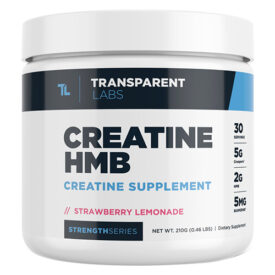
We like that this product includes hydroxymethyl butyrate, the main metabolite in leucine that prevents muscle protein breakdown. Plus, the Blue Raspberry flavor is tasty, and the blend contains no artificial sweeteners.
Specs
- Price Per Serving: $1.67
- Creatine Type: Creatine monohydrate
- Creatine Per Serving: 5 grams
- Servings Per Container: 30 servings (60 serving option available for Unflavored)
- Available Flavors: Unflavored, Black Cherry, Blue Raspberry, Blueberry Pomegranate, Cherry Kiwi, Fruit Punch, Hawaiian Splash, Orange, Peach Mango, Peach Rings, Sour Grape, Strawberry Lemonade, Tropical Punch, Watermelon
- Third-Party Testing: Yes
Transparent Labs Creatine HMB stands out as the best creatine for teens with its scientifically backed formula, providing the efficacious 5-gram dose of creatine that’s enhanced with HMB and vitamin D. (2) It’s also third-party tested and available in unflavored and many flavored options, making it a trusty choice that caters to most teenage palates.
Our tester, a certified personal trainer, tried the Black Cherry flavor and rated it a 4 out of 5. They noted, “The flavor seemed watered down, but I’ve yet to fine-tune the water-to-powder ratio, so I could see this improving over time.” However, they observed more ‘floaties’ than desired, rating its solubility a 3.5 out of 5: “The supplement didn’t dissolve completely on the first mix, so I had to clean out my shaker with a final splash of water to get all of the serving.” Despite this, its high-quality formulation may outweigh this minor drawback.
BarBend expert reviewer Chelsea Rae Bourgeois, R.D., highlights, “Transparent Labs contains 5 grams of creatine combined with B-Hydroxy B-Methylbutyrate to increase strength and stamina. Plus, I like that this creatine formula contains 5 milligrams of black pepper extract to help increase bioavailability. I’m all about maximizing the bang for your buck!” (4) She rates Transparent Labs Hydrate 4.5 out of 5 for its clinically-dosed, science-backed ingredients.
Our tester valued the inclusion of HMB, a natural compound from the breakdown of leucine, which may minimize exercise-induced muscle damage. (5) While there’s limited research on HMB’s effects in adolescents, it could benefit younger populations since it supports recovery in challenging situations. (6)
Additionally, Transparent Labs’ creatine powder includes 12.5 micrograms (500 IUs) of vitamin D, supporting bone, muscle, heart, metabolic, and overall health. The recommended daily allowance (RDA) for vitamin D for adolescents is 400 IU, but this amount may not suffice for those who are insufficient or deficient. (7)
Transparent Labs Creatine HMB is certified by Informed-Choice, ensuring it meets strict purity standards and is free from banned substances. This certification makes it a top choice for competitive athletes and teens (and parents) who prioritize safety, cementing its reputation as the best creatine for teens.
Read our full Transparent Labs Creatine HMB Review.
Best Creatine for Teens for Beginners: XWERKS Lift
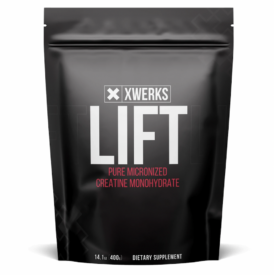
Lift is Xwerks' creatine monohydrate supplement. One bag comes with 80 five-gram servings of micronized creatine monohydrate, making it easy to mix into water, or with other supplements in a stack.
Specs
- Price Per Serving: $0.61
- Creatine Type: Pure micronized creatine monohydrate
- Creatine Per Serving: 5 grams
- Servings Per Container: 80 servings
- Available Flavors: Unflavored
- Third-Party Testing: No
Once you’ve established a solid health and fitness routine — covering essentials like proper nutrition, structured training, and adequate sleep — it’s a great time to consider adding creatine supplements to give you an extra edge. But where should you start? Enter XWERKS Lift, a pure creatine monohydrate powder that offers a potent 5-gram dose of the most well-researched form, making it ideal for beginners. (2) Our expert reviewer Chelsea Rae Bourgeois, highlights, “XWERKS keeps it simple with Lift. This micronized creatine supplement is unflavored and easy to digest, making it a straightforward addition to your regimen.”
Micronized means the creatine molecules have been sized down to enhance absorption, though there’s no definitive proof that it’s more bioavailable or leads to greater retention than regular creatine. (8) In any case, XWERKS Lift’s formulation received a solid 4.5 out of 5 from our reviewer. “The micronized creatine is easily digested, and the supplement doesn’t contain anything unnecessary,” Bourgeois noted.
While micronized creatine monohydrate may not have proven advantages over regular-sized molecules, our expert tester, a certified personal trainer, highlighted its benefits in solubility, giving it a 5-out-of-5 rating. “This powder mixes easily in your beverage of choice as an unflavored option, and I didn’t have to deal with any clumps or residue.” Bourgeois echoes this advantage, noting, “Because it’s unflavored and easy to digest, it can mix into your favorite drink without concerns over tolerance.”
However, if you’re an athlete looking for a multitasking supplement, this may not be the one for you. Bourgeois states, “XWERKS Lift provides 5 grams of creatine, but don’t get your hopes up for anything more. There are no other performance-supporting ingredients in the powder.”
XWERKS Lift also isn’t third-party tested, which is a critical factor for competitive athletes. However, if you trust the brand’s transparency and simple formulation as a single-ingredient product as we do, it’s a solid option for those not subject to banned substance testing.
Read our full XWERKS Lift Creatine Review.
Best Creatine Monohydrate for Teens: Onnit Creatine Monohydrate
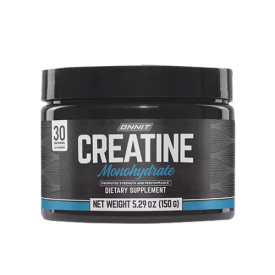
This unflavored powder offers a truly neutral taste (something that is surprisingly hard to come by on the supplement market). And at just $0.50 per serving, it's a steal.
Specs
- Price Per Serving: $0.50
- Creatine Type: Micronized creatine monohydrate
- Creatine Per Serving: 5 grams
- Servings Per Container: 30 servings
- Available Flavors: Unflavored
- Third-Party Testing: Yes
No frills, no fluff, just top-tier ratings across the board, Onnit’s straightforward and effective creatine monohydrate is the best choice for teens. Our expert reviewer, Chelsea Rae Bourgeois, R.D., gives it a perfect 5 out of 5 score, stating, “It’s hard to give it any other score when it provides the upper end of the optimal range of creatine without any unnecessary fluff ingredients!”
Each serving delivers a 5-gram dose of micronized creatine monohydrate, which Bourgeois notes “is thought to mix and absorb more easily.” (8) While more research is welcomed, anecdotal evidence from our expert tester, a certified personal trainer, supports this claim. They reported, “I didn’t expect this to clump up since it’s solely creatine monohydrate. Thankfully, my hypotheses rang true — no issues with gritty residue or unwanted ‘floaties.’” The neutral taste also earned high praise: “Nothing too overwhelming and mixed easily with my beverage of choice.” These attributes secured a solid 5 out of 5 stars for taste and solubility.
You won’t have to fork over a premium price to get this high-marked creatine supplement, either. Bourgeois notes, “Onnit’s biggest flex with this creatine monohydrate powder might be its price point. Each serving provides 5 grams of creatine and is around $0.50 (or less if you subscribe and save), making it one of the most affordable options on the market.”
Available only as an unflavored supplement, Bourgeois recognizes it’s a seamless addition to the best supplement stacks, though it may feel monotonous if used alone. However, the versatility and effectiveness of this creatine monohydrate make it a top pick for teens looking to optimize their performance without breaking the bank.
Best Creatine for Teen Athletes: Sports Research Creatine
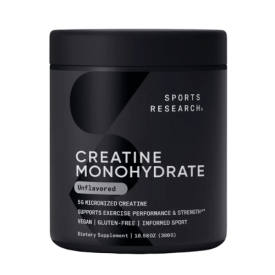
This unflavored micronized creatine is available in two different size options and is Informed Sport certified, vegan, and gluten-free. You can even subscribe to recurring deliveries and save 15 percent.
Specs
- Price Per Serving: $0.33
- Creatine Type: Micronized Creatine Monohydrate
- Creatine Per Serving: 5 grams
- Servings Per Container: 60
- Available Flavors: Unflavored
- Third-Party Testing: Yes
With a name like Sports Research, it’s easy to assume it’s ideal for athletes. But you know what they say about assuming… Sports Research Creatine earns its recognition for good reasons, and we ranked it as the best creatine for teen athletes for two key factors: 1) It’s third-party tested by Informed-Sport — a crucial certification for athletes, especially since over 10% of some supplements contain ingredients banned by the FDA. 2) It provides the research-based 5 grams of creatine to support training and fitness goals. (2)
Our expert reviewer, Chelsea Rae Bourgeois, R.D., emphasizes, “As far as its formulation goes, Sports Research Creatine Monohydrate hits the nail on the head. It provides the upper end of what research considers an effective dose of creatine and doesn’t contain any unnecessary fillers.” This quality led to a 5 out of 5 formulation rating from both Bourgeois and myself.
While it doesn’t offer flavor variety, our testers appreciated the neutral taste of the unflavored option, giving it a perfect 5 out of 5 for taste (or lack thereof). They did notice a bit of sediment when mixing it alone, rating its solubility at 4.5 out of 5. However, there was no settling when blended with electrolytes, so we recommend combining it with other supplements. Bourgeois also highlighted that because it solely contains micronized creatine monohydrate, it’s easy to add to any supplement stack.
Sports Research offers 60 and 100-serving containers, with the latter saving you about $0.02 per serving. While this might seem negligible, it can add up over time, especially since a 100-serving container lasts a little over three months if taken consistently. Plus, more servings mean less frequent ordering.
Best Budget Creatine for Teens: Nutricost Creatine
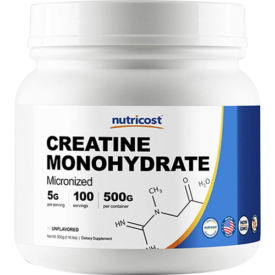
This extremely inexpensive creatine is micronized for extra solubility.
Specs
- Price Per Serving: $0.33
- Creatine Type: Creatine monohydrate
- Creatine Per Serving: 5 grams
- Servings Per Container: 100 and 200-serving options for Unflavored
- Available Flavors: Blue Raspberry, Fruit Punch, Pineapple Mango, Unflavored, Watermelon
- Third-Party Testing: Yes
Nutricost Creatine Monohydrate Micronized Powder offers exceptional value, with prices ranging from $0.16 to $0.35 per serving, making it a top choice for budget-conscious consumers. BarBend expert reviewer Chelsea Rae Bourgeois, R.D., praises the unflavored option, saying, “I love that the unflavored option of Nutricost Creatine Monohydrate Micronized Powder gives you 5 grams of creatine and no fluff. You get exactly what you pay for, and it’s third-party tested.”
The value of Nutricost Creatine Monohydrate Micronized Powder is clear, especially for the unflavored variety. At this time of writing, it’s available at a 53 percent discount, costing $15.64 for a 100-serving container or just $0.16 per serving. A 200-serving container costs $38.39, or $0.19 per serving. Flavored varieties cost slightly more, with prices between $0.28 and $0.35 per serving, yet it remains one of the most budget-friendly options available.
Whether you choose unflavored or flavored, Nutricost Creatine Monohydrate Micronized Powder provides 5 grams of creatine per scoop. Bourgeois reassures, “Nutricost provides the research-backed dose to help increase strength, endurance, muscle mass, and energy.” (2)
However, the flavored options include additional ingredients, which deducted points from Nutricost’s overall score. Bourgeois explains, “Nutricost Creatine Monohydrate Micronized Powder scores a 4 out of 5 for its formulation since the flavored options contain sucralose and other additives, which may not work for everyone’s gut microbiome. However, I’d score the unflavored option a perfect 5.”
Our product tester, a NASM-certified nutrition coach, tried the unflavored variety and noted, “It tasted as expected, and I could easily add this to my drink of choice,” giving its flavor a 4.5 out of 5.
Certified personal trainer and BarBend editorial team member Alex Polish adds, “I’m disappointed that the solubility isn’t better given that it’s micronized. But for the price, straightforward (single) ingredient, and the fact that it’s third-party tested, I’m all in.”
Nutricost supplements are produced in a GMP-compliant, FDA-registered facility and undergo third-party testing for purity and safety. However, it’s unclear who conducts these tests and whether it’s screened for banned substances.
Read our full Nutricost Creatine Monohydrate Review.
Best Creatine Gummies for Teens: Swoly Creatine Gummies
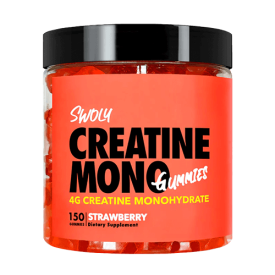
These gummies boast 4g of creatine monohydrate and come in a delicious strawberry flavor. You do need to chew 5 for a full dose, but they're so tasty, we don't think you'll have any complaints about that.
Specs
- Price Per Serving: $1.00
- Creatine Type: Creatine monohydrate
- Creatine Per Serving: 4 grams
- Servings Per Container: Creatine monohydrate
- Available Flavors: Strawberry
- Third-Party Testing: Yes
Among the best creatine gummies, Swoly stands out for several reasons. For starters, they’re gelatin-free, making them perfect for vegans and various diets. They also provide an effective dose of creatine with a subtle, enjoyable flavor. Plus, because teens perceive gummy bears as the unhealthiest snack, Swoly offers a healthier alternative. (9)
Our product tester gave them a 4 out of 5 for flavor, noting, “If you’re comparing the flavor to other gummy candies out there, I’d say the Strawberry taste is somewhat mild. However, I don’t think it’s unpleasant and actually enjoyed taking these gummies as part of my pre-workout routine that’s normally riddled with other strong flavors via BCAAs and pre-workout.” They did mention a tougher texture compared to typical gummy bears, which might not be ideal for those with sensitive teeth, but reported no unwanted side effects.
The novelty of Swoly’s gummies was a highlight for our tester, who said, “I already use other powders throughout the day, so these gummies offer a nice break in my routine in an appealing, tasteful format.” BarBend expert reviewer Chelsea Rae Bourgeois, R.D., emphasizes the convenience of Swoly Creatine Gummies: “Talk about convenient! Swoly Creatine Gummies pack an optimal dose of creatine monohydrate into each serving, meaning you have one less gritty powder in your supplement stack.”
But it’s not just about enjoyment. Bourgeois noted, “Swoly really hit the nail on the head with the amount of creatine they pack into each serving of their creatine gummies. Research shows creatine supplements absorb best in doses of 3 to 5 grams, and each serving from Swoly provides 4 grams.”
However, you need to consume five gummies to get the full dose, which may be favorable for some but too much for others. Despite this, Bourgeois rated Swoly’s formulation a 4 out of 5, appreciating the amount of creatine monohydrate but deducting points for the use of artificial ingredients and small amounts of added sugar.
Best Tasting Creatine for Teens: Legion Recharge

Specs
- Price Per Serving: $1.07
- Creatine Type: Micronized creatine monohydrate
- Creatine Per Serving: 5 grams
- Servings Per Container: 30
- Available Flavors: Arctic Blast, Fruit Punch, Sour Candy, Strawberry Lemonade, Unflavored, Watermelon
- Third-Party Testing: Yes
If you’re looking for a tasty creatine powder that’s naturally sweetened and flavored, Legion Recharge earned 5 out of 5 ratings for its taste and solubility from our product tester, a certified personal trainer. They particularly enjoyed the Sour Candy flavor, noting, “I was pleased with the flavor notes that made every sip all the more enjoyable.” They also appreciated how easily it dissolved: “I mixed a single serving in my normal water bottle, gave it roughly four to five shakes, and the powder was gone.”
Beyond its great taste, our expert reviewer Chelsea Rae Bourgeois, R.D., praised Legion Recharge’s evidence-based formulation noting, “I love that Legion Recharge is formulated with science-backed and highly effective ingredients and doses. Each scoop provides a whopping 5 grams of creatine monohydrate, 2.1 grams of L-carnitine L-tartrate, and 10 milligrams of corosolic acid to improve muscle recovery, build lean muscle mass, and enhance athletic performance.” (10)(11)
Our tester felt these favorable effects within a few months, sharing, “I absolutely love the performance it brings to the table and feel more recovered than usual. While this could all be a mental trick I’m pulling on myself, I foresee using this powder heavily.”
While research on these ingredients is limited in teens, stressing the importance of guidance from a medical expert, 2,250 milligrams of L-carnitine L-tartrate daily is generally safe for adolescents. (12) Data on corosolic acid is even scarcer, but its inclusion is appreciated: “I like that Legion included corosolic acid—not many creatine supplements do. Recharge’s formulation scores a 4.25 out of 5 in my book,” with slight deductions for the natural sweetener stevia, even in the unflavored option, which may not be for everyone.
Despite the lack of evidence for teens, Legion bases its formulations on solid evidence, referencing over 40 peer-reviewed studies, and all products undergo third-party testing. Our expert review sums it up best: “It’s a major plus that this supplement is third-party tested and I love love love that Legion posts the lab results for customers to review. Transparency for the win!”
Read our full Legion Recharge Creatine Review.
Benefits of Creatine for Teens
Creatine benefits people of all ages, including teenagers, due to its role in the body. About 95 percent of creatine is stored in skeletal muscle, with the rest found in the brain and other tissues as phosphocreatine (or creatine phosphate). Phosphocreatine helps produce and replenish adenosine triphosphate (ATP), the primary energy source for our cells. (13) Higher creatine levels mean more ATP, leading to enhanced exercise performance and better brain health, among other benefits. (2)
While more research is needed on its effects on adolescents, here’s how creatine can benefit teens into adulthood:
- May improve training adaptations and recovery: Creatine supplementation can significantly help improve recovery and adaptations from hard training by reducing inflammation and restoring muscle glycogen, especially when taken with carbohydrates before working out. These training adaptations allow them to handle high volumes of training better and recover faster, promoting more effective workouts and improved performance. (2)
- May increase performance, strength, and power: Creatine is highly recommended for strength and power athletes since it boosts ATP and energy, enhancing performance in high-intensity exercises by up to 20 percent. (2) While research on teens is mostly focused on swimming and soccer, creatine is shown to improve repeat sprinting and soccer dribbling performance. (13)
- May reduce injury risk: Creatine can help prevent injuries, lessen their severity, and improve rehabilitation, making it especially beneficial for high-risk athletes. Athletes who take creatine during training and competition also experience fewer injuries compared to those who don’t. (2)
- May increase muscle mass: Creatine helps you build muscle by repairing and strengthening muscle fibers after you exercise. Taking creatine during your resistance training may also lead to more muscle mass compared to not using it. (2)
- May support brain and mental health: The use of creatine can boost brain creatine levels by up to 15 percent, potentially enhancing cognitive function. (14) It may also manage and reduce symptoms of adolescent depression. (15)
How Much Do Creatines for Teens Cost?
Our research shows that creatine for teens costs an average of $0.79 per serving for a one-time purchase, with prices ranging from $0.33 to $1.67. Factors like formulation, third-party testing, and certifications influence these variations.
| Best Creatine for Teens Overall | Transparent Labs Creatine HMB | $1.67 |
| Best Creatine for Teens for Beginners | XWERKS Lift | $0.61 |
| Best Creatine Monohydrate for Teens | Onnit Creatine Monohydrate | $0.50 |
| Best Creatine for Teen Athletes | Sports Research Creatine | $0.33 |
| Best Budget Creatine for Teens | Nutricost Creatine | $0.33 |
| Best Creatine Gummies for Teens | Swoly Creatine Gummies | $1.00 |
| Best Tasting Creatine for Teens | Legion Recharge | $1.07 |
What to Consider Before Buying Creatine for Teens
While creatine is considered safe for teens, it’s crucial to determine if it truly benefits them. The International Society of Sports Nutrition recommends creatine for young athletes who engage in serious, supervised training, follow a balanced, performance-enhancing diet, and adhere to appropriate dosages. (2) If you’ve weighed the pros and cons of creatine, ideally guided by a healthcare professional, and want to try it, consider these factors to ensure you find the best option:
Type and Dosage of Creatine
We recommend creatine monohydrate for teens and people of all ages because it’s the most researched and trusted form. Ensure the product offers optimal daily dose per serving, 3 to 5 grams (or roughly 0.1 grams per kilogram of body weight). (2) Also check the number of servings per container to minimize the need for frequent reorders.
Additional Ingredients
When shopping for creatine supplements, you’ll notice that some products contain only creatine while others include additional ingredients. These extras range from beneficial additives, such as HMB to boost recovery, to less desirable ones, like unnecessary fillers and artificial sweeteners. (5)
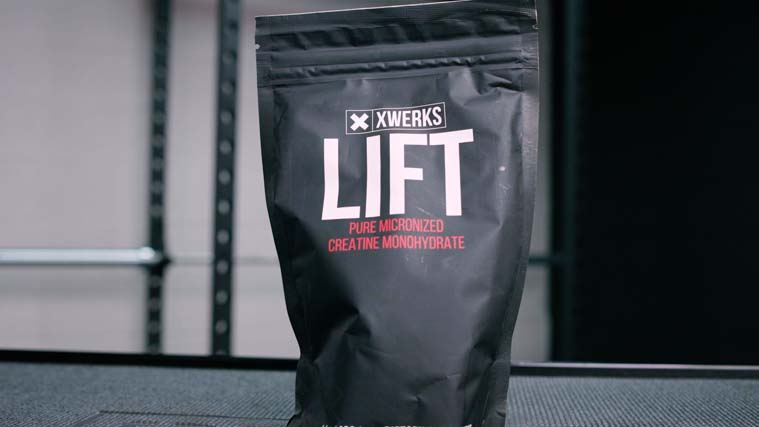
Even seemingly beneficial components, like vitamin D, might not be necessary for you. Review the ingredients list to ensure the formulation meets your health goals and dietary needs.
Form of Creatine
Creatine supplements come in different forms, like powders and gummies, so pick the one that you’ll enjoy consistently for maximum benefit. Plain powders are super versatile and can be mixed with any drink, while flavored powders might have fewer options but still taste good and keep you hydrated. Gummies are a tasty and convenient choice — no liquids and mixing needed. (Just remember, hydration is still important!)
Third-Party Testing
When choosing creatine supplements, prioritize those that have been third-party tested to ensure the ingredients are pure and safe. While not all untested products are inherently “bad” — especially from reputable brands — independent certifications are crucial for athletes subject to drug testing.
Budget
When picking a creatine supplement, keep a budget in mind since you’ll need to use it consistently for the best results. While supplements with multiple ingredients can be costlier, plenty of high-quality, affordable pure creatine options are available.
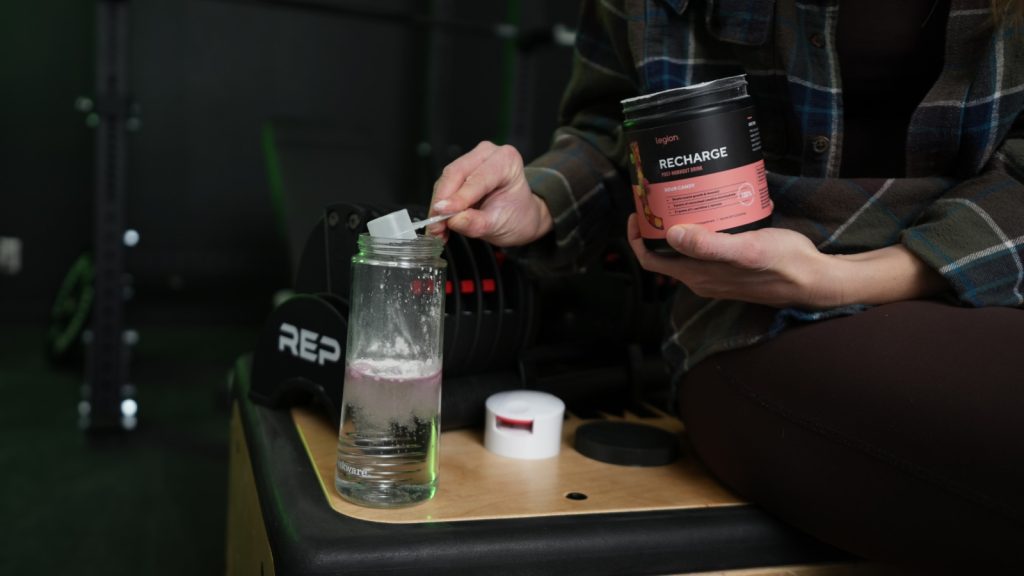
Compare prices from third-party sellers like Amazon, consider subscriptions for regular deliveries, and buy in bulk to save even more.
Creatine for Teens FAQs
What is the best creatine for teens?
Choosing the right creatine for teens depends on individual fitness goals and needs. Generally, the best options contain 3 to 5 grams of creatine monohydrate, are third-party tested, and are easy to consume. (2) After a thorough evaluation and hands-on testing, our top pick is Transparent Labs Creatine HMB for its high-quality, well-dosed ingredients and dedication to transparency and independent testing. Additionally, it offers a variety of flavors and includes HMB, vitamin D, and black pepper extract to boost fitness and overall health benefits.
How much do creatines for teens cost?
Creatine for teens typically costs about $0.79 per serving, but prices can range from $0.33 to $1.67 per serving. The cost varies based on factors like the brand, ingredients, and features such as third-party testing and certifications.
What are some potential side effects of creatine?
The most commonly reported side effects of creatine supplementation include weight gain, muscle cramps, and gastrointestinal discomfort. (16) The International Society of Sports Nutrition explains that weight gain is primarily due to short-term water retention and long-term muscle growth, not increased body fat. (2)
For many, this is a positive outcome. Gastrointestinal issues, such as bloating and diarrhea, tend to occur more frequently when doses exceed 10 grams, regardless of the type of creatine or when combined with caffeine. (17)(18) Overall, creatine is considered safe for adults and appears safe for teens, with minimal risk.
References
- Kreider, R. B., & Stout, J. R. (2021). Creatine in Health and Disease. Nutrients, 13(2), 447. https://doi.org/10.3390/nu13020447
- Kreider, R. B., Kalman, D. S., Antonio, J., Ziegenfuss, T. N., Wildman, R., Collins, R., Candow, D. G., Kleiner, S. M., Almada, A. L., & Lopez, H. L. (2017). International Society of Sports Nutrition position stand: safety and efficacy of creatine supplementation in exercise, sport, and medicine. Journal of the International Society of Sports Nutrition, 14, 18. https://doi.org/10.1186/s12970-017-0173-z
- Fazio, C., Elder, C. L., & Harris, M. M. (2022). Efficacy of Alternative Forms of Creatine Supplementation on Improving Performance and Body Composition in Healthy Subjects: A Systematic Review. Journal of strength and conditioning research, 36(9), 2663–2670. https://doi.org/10.1519/JSC.0000000000003873
- Dudhatra, G. B., Mody, S. K., Awale, M. M., Patel, H. B., Modi, C. M., Kumar, A., Kamani, D. R., & Chauhan, B. N. (2012). A comprehensive review on pharmacotherapeutics of herbal bioenhancers. TheScientificWorldJournal, 2012, 637953. https://doi.org/10.1100/2012/637953
- Kim, D., & Kim, J. (2022). Effects of β-hydroxy-β-methylbutyrate supplementation on recovery from exercise-induced muscle damage: a mini-review. Physical activity and nutrition, 26(4), 41–45. https://doi.org/10.20463/pan.2022.0023
- Wilson, J. M., Fitschen, P. J., Campbell, B., Wilson, G. J., Zanchi, N., Taylor, L., Wilborn, C., Kalman, D. S., Stout, J. R., Hoffman, J. R., Ziegenfuss, T. N., Lopez, H. L., Kreider, R. B., Smith-Ryan, A. E., & Antonio, J. (2013). International Society of Sports Nutrition Position Stand: beta-hydroxy-beta-methylbutyrate (HMB). Journal of the International Society of Sports Nutrition, 10(1), 6. https://doi.org/10.1186/1550-2783-10-6
- Pérez-López, F. R., Pérez-Roncero, G., & López-Baena, M. T. (2010). Vitamin D and adolescent health. Adolescent health, medicine and therapeutics, 1, 1–8. https://doi.org/10.2147/AHMT.S7472
- Kreider, R. B., Jäger, R., & Purpura, M. (2022). Bioavailability, Efficacy, Safety, and Regulatory Status of Creatine and Related Compounds: A Critical Review. Nutrients, 14(5), 1035. https://doi.org/10.3390/nu14051035
- Bucher, T., Collins, C., Diem, S., & Siegrist, M. (2016). Adolescents’ perception of the healthiness of snacks. Food Quality and Preference, 50, 94–101. https://doi.org/10.1016/j.foodqual.2016.02.001
- Volek, J. S., Kraemer, W. J., Rubin, M. R., Gómez, A. L., Ratamess, N. A., & Gaynor, P. (2002). L-Carnitine L-tartrate supplementation favorably affects markers of recovery from exercise stress. American journal of physiology. Endocrinology and metabolism, 282(2), E474–E482. https://doi.org/10.1152/ajpendo.00277.2001
- Stohs, S. J., Miller, H., & Kaats, G. R. (2012). A review of the efficacy and safety of banaba (Lagerstroemia speciosa L.) and corosolic acid. Phytotherapy research : PTR, 26(3), 317–324. https://doi.org/10.1002/ptr.3664
- Bruzell, E., Granum, B., Hetland, R., Husøy, T., Rohloff, J., Wicklund, T., & Steffensen, I.-L. (2018). Risk Assessment of “Other Substances” – L-Carnitine and L-Carnitine-L-tartrate. European Journal of Nutrition & Food Safety, 8(4), 174–176. https://doi.org/10.9734/ejnfs/2018/42545
- Jagim, A. R., & Kerksick, C. M. (2021). Creatine Supplementation in Children and Adolescents. Nutrients, 13(2), 664. https://doi.org/10.3390/nu13020664
- Forbes, S. C., Cordingley, D. M., Cornish, S. M., Gualano, B., Roschel, H., Ostojic, S. M., Rawson, E. S., Roy, B. D., Prokopidis, K., Giannos, P., & Candow, D. G. (2022). Effects of Creatine Supplementation on Brain Function and Health. Nutrients, 14(5), 921. https://doi.org/10.3390/nu14050921
- Cullen, K. R., Padilla, L. E., Papke, V. N., & Klimes-Dougan, B. (2019). New Somatic Treatments for Child and Adolescent Depression. Current treatment options in psychiatry, 6(4), 380–400. https://doi.org/10.1007/s40501-019-00194-8
- Metzger, G. A., Minneci, P. M., Gehred, A., Day, A., & Klingele, K. E. (2023). Creatine supplementation in the pediatric and adolescent athlete– A literature review. Journal of orthopaedics, 38, 73–78. https://doi.org/10.1016/j.jor.2023.03.010
- Antonio, J., Candow, D. G., Forbes, S. C., Gualano, B., Jagim, A. R., Kreider, R. B., Rawson, E. S., Smith-Ryan, A. E., VanDusseldorp, T. A., Willoughby, D. S., & Ziegenfuss, T. N. (2021). Common questions and misconceptions about creatine supplementation: what does the scientific evidence really show?. Journal of the International Society of Sports Nutrition, 18(1), 13. https://doi.org/10.1186/s12970-021-00412-w
- Elosegui, S., López-Seoane, J., Martínez-Ferrán, M., & Pareja-Galeano, H. (2022). Interaction Between Caffeine and Creatine When Used as Concurrent Ergogenic Supplements: A Systematic Review. International journal of sport nutrition and exercise metabolism, 32(4), 285–295. https://doi.org/10.1123/ijsnem.2021-0262
